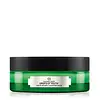What's inside
What's inside
 Key Ingredients
Key Ingredients

 Benefits
Benefits

 Concerns
Concerns

 Ingredients Side-by-side
Ingredients Side-by-side

Water
Skin ConditioningPropanediol
SolventGlycerin
HumectantDimethicone
EmollientHelianthus Annuus Hybrid Oil
EmollientPolysorbate 20
EmulsifyingDiheptyl Succinate
EmollientAcrylates/Beheneth-25 Methacrylate Copolymer
Phenoxyethanol
PreservativeTocopheryl Acetate
AntioxidantOrbignya Oleifera Seed Oil
EmollientBenzyl Alcohol
PerfumingCaprylhydroxamic Acid
Sodium Hyaluronate
HumectantSodium Hydroxide
BufferingParfum
MaskingDisodium EDTA
Adenosine
Skin ConditioningCaffeine
Skin ConditioningCapryloyl Glycerin/Sebacic Acid Copolymer
Skin ConditioningLinalool
PerfumingCitronellol
PerfumingLeontopodium Alpinum Meristem Cell Culture
Skin ConditioningLimonene
PerfumingCitric Acid
BufferingXanthan Gum
EmulsifyingWater, Propanediol, Glycerin, Dimethicone, Helianthus Annuus Hybrid Oil, Polysorbate 20, Diheptyl Succinate, Acrylates/Beheneth-25 Methacrylate Copolymer, Phenoxyethanol, Tocopheryl Acetate, Orbignya Oleifera Seed Oil, Benzyl Alcohol, Caprylhydroxamic Acid, Sodium Hyaluronate, Sodium Hydroxide, Parfum, Disodium EDTA, Adenosine, Caffeine, Capryloyl Glycerin/Sebacic Acid Copolymer, Linalool, Citronellol, Leontopodium Alpinum Meristem Cell Culture, Limonene, Citric Acid, Xanthan Gum
Betula Platyphylla Japonica Juice
Skin ConditioningButylene Glycol
HumectantGlycerin
HumectantDimethicone
EmollientBetaine
HumectantCetearyl Alcohol
Emollient1,2-Hexanediol
Skin ConditioningCetearyl Olivate
Sorbitan Olivate
EmulsifyingEthylhexylglycerin
Skin ConditioningHydroxyethyl Acrylate/Sodium Acryloyldimethyl Taurate Copolymer
Emulsion StabilisingEthyl Hexanediol
SolventXanthan Gum
EmulsifyingAllantoin
Skin ConditioningPanthenol
Skin ConditioningSodium Hyaluronate
HumectantSodium Lactate
Buffering4-Terpineol
MaskingWater
Skin ConditioningBetula Platyphylla Japonica Juice, Butylene Glycol, Glycerin, Dimethicone, Betaine, Cetearyl Alcohol, 1,2-Hexanediol, Cetearyl Olivate, Sorbitan Olivate, Ethylhexylglycerin, Hydroxyethyl Acrylate/Sodium Acryloyldimethyl Taurate Copolymer, Ethyl Hexanediol, Xanthan Gum, Allantoin, Panthenol, Sodium Hyaluronate, Sodium Lactate, 4-Terpineol, Water
 Reviews
Reviews

Ingredients Explained
These ingredients are found in both products.
Ingredients higher up in an ingredient list are typically present in a larger amount.
Dimethicone is a type of synthetic silicone created from natural materials such as quartz.
What it does:
Dimethicone comes in different viscosities:
Depending on the viscosity, dimethicone has different properties.
Ingredients lists don't always show which type is used, so we recommend reaching out to the brand if you have questions about the viscosity.
This ingredient is unlikely to cause irritation because it does not get absorbed into skin. However, people with silicone allergies should be careful about using this ingredient.
Note: Dimethicone may contribute to pilling. This is because it is not oil or water soluble, so pilling may occur when layered with products. When mixed with heavy oils in a formula, the outcome is also quite greasy.
Learn more about DimethiconeGlycerin is already naturally found in your skin. It helps moisturize and protect your skin.
A study from 2016 found glycerin to be more effective as a humectant than AHAs and hyaluronic acid.
As a humectant, it helps the skin stay hydrated by pulling moisture to your skin. The low molecular weight of glycerin allows it to pull moisture into the deeper layers of your skin.
Hydrated skin improves your skin barrier; Your skin barrier helps protect against irritants and bacteria.
Glycerin has also been found to have antimicrobial and antiviral properties. Due to these properties, glycerin is often used in wound and burn treatments.
In cosmetics, glycerin is usually derived from plants such as soybean or palm. However, it can also be sourced from animals, such as tallow or animal fat.
This ingredient is organic, colorless, odorless, and non-toxic.
Glycerin is the name for this ingredient in American English. British English uses Glycerol/Glycerine.
Learn more about GlycerinSodium Hyaluronate is hyaluronic acid's salt form. It is commonly derived from the sodium salt of hyaluronic acid.
Like hyaluronic acid, it is great at holding water and acts as a humectant. This makes it a great skin hydrating ingredient.
Sodium Hyaluronate is naturally occurring in our bodies and is mostly found in eye fluid and joints.
These are some other common types of Hyaluronic Acid:
Learn more about Sodium HyaluronateWater. It's the most common cosmetic ingredient of all. You'll usually see it at the top of ingredient lists, meaning that it makes up the largest part of the product.
So why is it so popular? Water most often acts as a solvent - this means that it helps dissolve other ingredients into the formulation.
You'll also recognize water as that liquid we all need to stay alive. If you see this, drink a glass of water. Stay hydrated!
Learn more about WaterXanthan gum is used as a stabilizer and thickener within cosmetic products. It helps give products a sticky, thick feeling - preventing them from being too runny.
On the technical side of things, xanthan gum is a polysaccharide - a combination consisting of multiple sugar molecules bonded together.
Xanthan gum is a pretty common and great ingredient. It is a natural, non-toxic, non-irritating ingredient that is also commonly used in food products.
Learn more about Xanthan Gum